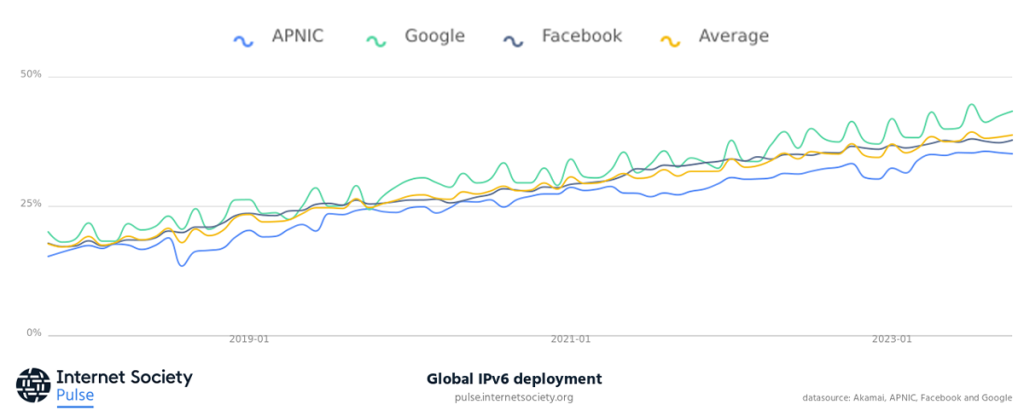A notable IPv6 statistic circulated on Reddit on the weekend, noting that half of the Alexa Top 1,000 ranked websites now support IPv6.

While this ‘milestone’ received its share of critique, given the time it has taken to reach this point, it is one of the first measurements to show a near majority of IPv6 use worldwide.
Having said this, Amazon discontinued its Alexa Rank service on 1 May 2022, which means this statistic has most likely not been refreshed for more than a year. So, how many of the top 1,000 websites are IPv6 capable?
At Pulse, we use Chrome User Experience Report (CRuX) to measure the IPv6 capability of the 1,000 top websites. A limitation of this service is it only provides the user experience metrics for Chrome users. However, given that nearly two out of every three mobile and desktop web users use Chrome, it provides a reasonable reference.
If we look at Figure 2, we can see nearly half of the top 1,000 websites are IPv6 capable.
While this stat is a reflection of how many popular web services are now accessible via IPv6, the stat that most pundits are interested in is the number of Internet hosts that have functioning IPv6 capability. As per the Pulse Enabling Technologies dashboard (Figure 3), this figure is between 35 and 43%, depending on the source.

The discrepancy between these sources is due to each using different methodologies for measuring this indicator. While these result in fairly similar statistics for global IPv6 capability, they can vary quite a bit when looking at specific networks or countries, as is the case for the Netherlands (Figure 4).
These discrepancies are common across most Internet measurements and, as such, it’s a good idea to validate whatever statistic you see through your own research or with other sources (in the case of the above you can read the community’s reasoning on the RIPE IPv6 WG mailing list). This is one of the reasons why the Internet Society started Pulse, to collate various measurement sources to help users visualize and make sense of the health, availability, and evolution of the global Internet.


